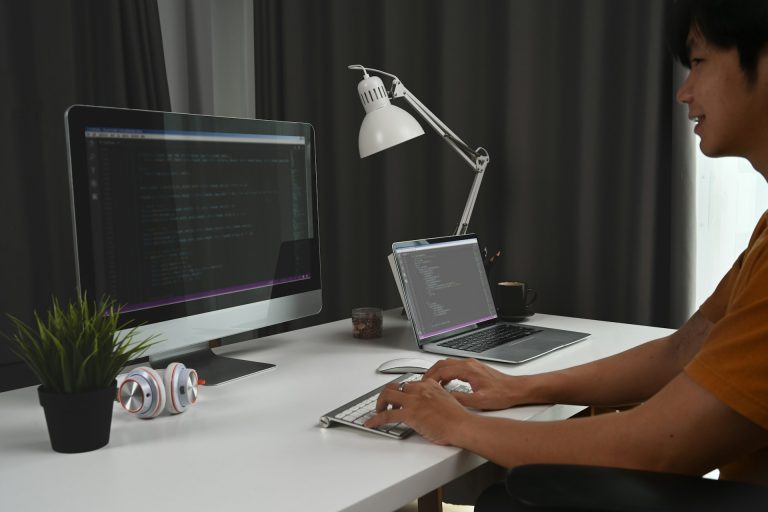There are two main approaches to designing across a diverse range of devices. One approach is responsive design, where a single layout adjusts to meet the needs of users’ screens. Responsive design can be used to make sure information fits the smaller screens of mobile devices, or to make sure it takes up the full width of users’ screens.
Another approach is adaptive design, which allows for multiple fixed designs that adapt to users’ screen sizes. As opposed to the more fluid responsive design, this approach uses multiple layouts that don’t adjust.
Both have their own merits and pitfalls, but which one will you need for your business website?
What Is Responsive Design?
Responsive design is when you have a single layout that adjusts to users’ screen sizes. This approach is convenient when you don’t have the time or budget to create multiple versions of your website and you need to serve an audience with screen sizes ranging from desktops to mobile phones.
When designing sites with responsive design, it’s important to remember that the goal is to serve your users, not to show off your design skills.
With this in mind, it can be tempting to attempt to squeeze every bit of information on users’ screens, but in reality, this can be an unnecessary distraction. Also, by not limiting yourself to the space on users’ screens, you can serve your users almost as well on smaller screens.
Why Use Responsive Design?
The biggest benefit of responsive design is its potential to save you money in the long run. Creating several fixed layouts to adapt to the various screen sizes of your audience can be a time and cost-intensive process.
When you choose a responsive design, you can easily get rid of a lot of extra work by providing users with the same layout. Whether your users are on desktops or mobile devices, they will receive the same high-quality information.
What Is Adaptive Design?
Adaptive design is when you have multiple fixed layouts, such as desktop and smartphone layouts. When choosing this approach, you’ll need to find the sweet spot between having a lot of layouts and making layouts with too much information.
When designing a website with adaptive design, you’ll need to think about what each layout should contain and what functions should be included in each. This will help you make sure that users can find the information they are looking for, regardless of the device they are using.
Why Use Adaptive Design?
It’s important to consider the different screen sizes and capabilities of different devices, so choosing multiple fixed layouts allows you to do this.
If you choose an adaptive design for your website, you’ll be able to provide clear and easy to access information on a variety of devices and operating systems.
What Design to Use for Different Devices
So which approach should you choose? The answer is it depends. Are you trying to save time and money while still providing your users with high-quality information? Then the responsive design is the best option.
Are you concerned with providing users with the most precise information possible? Then an adaptive design is the best option. You’ll need to consider the information you’re trying to present so that you can make sure your adaptive designs are the best possible.
At the end of the day, either approach can allow you to effectively serve users with smaller screens while still providing the same great information that your users want and need.
Conclusion
As you can see, adaptive and responsive design are both fantastic options. The main question to ask is which one suits your business and your users best.
If you need help determining the right design to use for your own website, Studio Lore is here to help. We are a design studio in Melbourne dedicated to creating smart, creative and effective design. Get in touch with us today to learn how we can shape your brand’s online presence.



